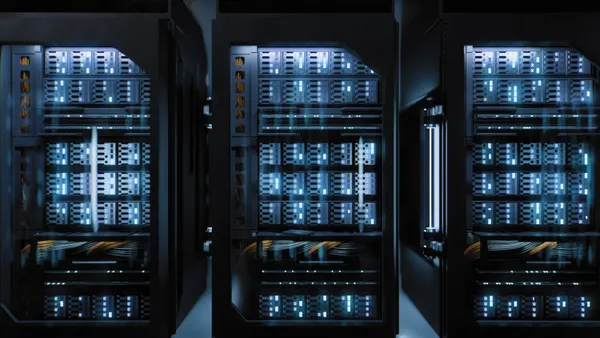Vegetation management remains one of the biggest budget items for utilities, and with good reason — as CNUC found, nearly a quarter of outages were attributable to vegetation. Yet, all too often, utilities’ vegetation management relies entirely on time-based pruning cycles, which cannot fully account for today’s changing conditions.
Shifting to a proactive vegetation management program based on actionable data addresses numerous headwinds facing grids today, including costs and resiliency. This type of approach leverages remote sensing technologies and machine learning analysis to provide network-wide vegetation insights for utilities. Equipped with the right data, utilities can extend their operating budgets by focusing on risk and impact.
For utilities that commit to digital transformation, the economic benefits are significant.
Establish more reliable O&M budgets
A data-driven vegetation management program doesn’t just incorporate pictures of utility lines with remote sensing technologies. A proactive approach leverages risk frameworks — built on trained machine learning models — that are configured to each utility’s existing trim specifications. These frameworks aggregate data and rank spans based on their compliance with those specifications. For example, Overstory, a leading provider of vegetation intelligence, applies this methodology to provide data-driven results for utilities.
“Risk frameworks allow utilities to prioritize what work needs to be done now and what can be pushed out based on actual data,” says Karim Al-Khafaji, Director of Business Development with Overstory.
This prioritization lets utilities more accurately plan how much vegetation maintenance is needed in a given year, compared to relying on foot patrols or static trimming cycles. “Utilities are often surprised to find that a good percentage of their lines are clear and need little to no work. That saves on costs for both inspection and trimming,” Al-Khafaji says. Delaware Electric Cooperative, for example, anticipates an 18% reduction in mileage to be trimmed using satellite intelligence with AI-driven risk analysis.
“On the other hand, higher-risk spans that were scheduled for trimming perhaps a few years down the road now are being addressed proactively,” he says. “Utilities save money by not having to send hotspot crews to these locations, and also by preventing outages from high-risk vegetation and the resulting restoration costs.”
A better understanding of exactly how many miles to trim and an accurate view of the vegetation conditions support predictable O&M budgeting for vegetation management. Whether utilities use unit-based maintenance contracts or time and materials, the visibility and clarity provided by proactive vegetation management improves budgeting for utilities and their contract partners.
“It lets you get to a better place with your contractors because you have this independent, consistent data source,” Al-Khafaji says.
Optimize your workforce
Labor and skill shortages remain a significant problem for utilities — not only are retirements increasing, but employee tenure at utilities has declined by over 36% in the last decade, according to Ernst & Young. Often, this leaves vegetation managers in a lurch when contracting work, paying increasingly steep costs.
Digital technologies are one of the few levers that utilities can pull to improve their situations. For example, satellite intelligence can scan a network faster than foot patrols. Combining remote sensing data with analysis for vegetation risks also allows utilities to deploy staff where they’re needed most, rather than spending time and resources on inspections of spans that don’t need maintenance.
“We know labor costs are up, and the needs are surpassing the amount of skilled labor available,” says Greg Geller, Founder and CEO of Stack Energy and a consultant with Overstory. “If you can get quality data on your riskiest areas in a timely way, that is crucial for addressing those risks with the labor you have.”
Actionable vegetation management streamlines the deployment of staff for regular maintenance. “You can group work orders so if a crew is deployed on a certain street, and you know from the snapshot of your network that there is another span two blocks over that needs work, those things can be tackled simultaneously,” Al-Khafaji says.
A data-driven approach also improves worker safety. For example, helicopter flights for visual inspections of remote regions can be dangerous for staff and inaccurate when visually assessing vegetation conditions. Utilities also use ATVs or send trucks to remote locations, so minimizing these deployments with remote sensing capabilities — such as satellites — reduces the risk to personnel.
Better OpEx to get more CapEx
Shifting to a new data-driven approach may seem like an overwhelming expense, but it provides long-term economic benefits as well as immediate gains in O&M budgeting and workforce optimization. Utilities are facing once-in-a-generation changes to their grids, as the world electrifies and decarbonization efforts increase.
At the very moment that utility infrastructure is aging past its lifespan, we need more transmission lines, connections for distributed resources, and capacity for greater loads from data centers, EV charging and more. In fact, a recent Deloitte study anticipates CapEx for investor-owned utilities could reach $1.8 trillion in the next decade.
Optimizing operating expenditures through digital solutions gives utilities greater flexibility in addressing these capital expenditures. “Look at it from a regulator’s perspective — if a utility is taking steps to reduce operating expenses, that can also reduce customer bills,” Geller says. “If that utility brings forward a CapEx project that can reduce customer bills over time, you’re likely to approve it,” he explains.
The energy transition will require CapEx spending, and not all of it can come from customer rate payments. “There is only so much room on customer bills,” Geller says. “Making vegetation management more affordable so that more budget is available for CapEx investments will be vital for achieving decarbonization.”
Savings for better operations today and future-proofing for tomorrow
A proactive, data-driven approach to vegetation management improves economic opportunities across a range of functions for utilities. From making O&M budgeting more reliable to avoiding outages and optimizing labor, this methodology gains efficiencies and saves money.
Investing in a new approach to vegetation management also sets utilities up for future success. “As grids change in the coming years, utilities need equally modern, digitized approaches to vegetation management,” Al-Khafaji says.
Utilities that don’t utilize modern strategies with their evolving grids risk being left behind, as costs and reliability suffer from a lack of efficiency. Tomorrow’s profitability needs better solutions to today’s challenges, and vegetation management is the key.
Schedule a demo with Overstory to learn more about satellite vegetation intelligence.










